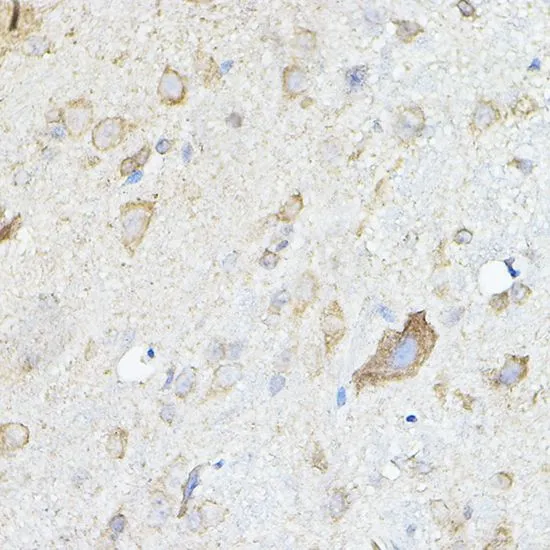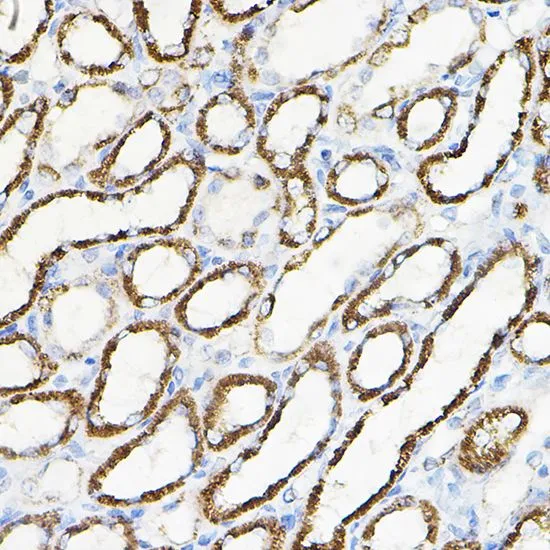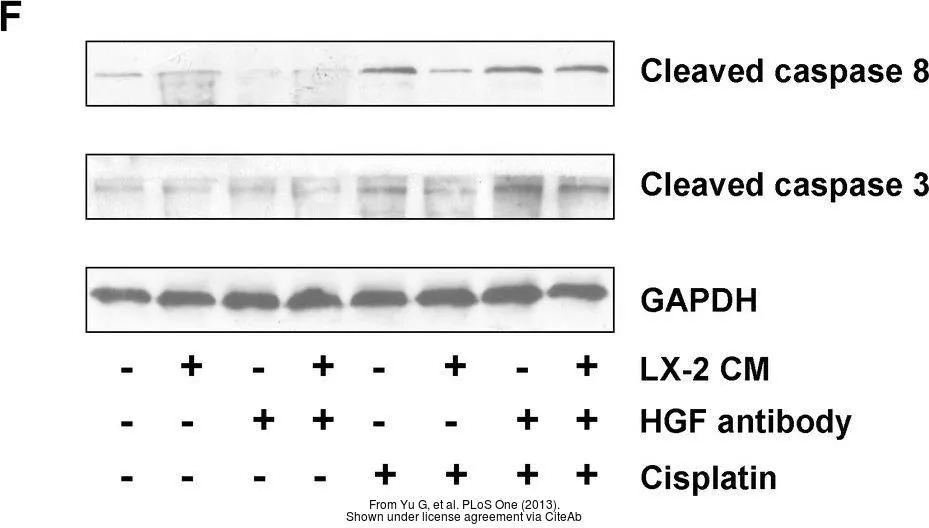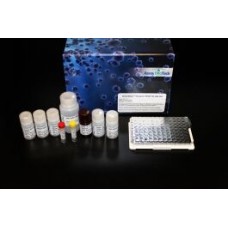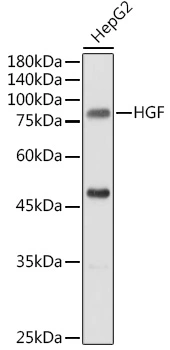
WB analysis of HepG2 cell lysate using GTX32651 HGF antibody. Dilution : 1:500 Loading : 25microg per lane
HGF antibody
GTX32651
ApplicationsWestern Blot, ImmunoHistoChemistry, ImmunoHistoChemistry Paraffin
Product group Antibodies
TargetHGF
Overview
- SupplierGeneTex
- Product NameHGF antibody
- Delivery Days Customer9
- Application Supplier NoteIHC-P: 1:50 - 1:100. *Optimal dilutions/concentrations should be determined by the researcher.Not tested in other applications.
- ApplicationsWestern Blot, ImmunoHistoChemistry, ImmunoHistoChemistry Paraffin
- CertificationResearch Use Only
- ClonalityPolyclonal
- ConjugateUnconjugated
- Gene ID3082
- Target nameHGF
- Target descriptionhepatocyte growth factor
- Target synonymsDFNB39, F-TCF, HGFB, HPTA, SF, hepatocyte growth factor, fibroblast-derived tumor cytotoxic factor, hepatocyte growth factor (hepapoietin A; scatter factor), hepatopoietin-A, lung fibroblast-derived mitogen
- HostRabbit
- IsotypeIgG
- Protein IDP14210
- Protein NameHepatocyte growth factor
- Scientific DescriptionThis gene encodes a protein that binds to the hepatocyte growth factor receptor to regulate cell growth, cell motility and morphogenesis in numerous cell and tissue types. Alternative splicing results in multiple transcript variants, at least one of which encodes a preproprotein that is proteolytically processed to generate alpha and beta chains, which form the mature heterodimer. This protein is secreted by mesenchymal cells and acts as a multi-functional cytokine on cells of mainly epithelial origin. This protein also plays a role in angiogenesis, tumorogenesis, and tissue regeneration. Although the encoded protein is a member of the peptidase S1 family of serine proteases, it lacks peptidase activity. Mutations in this gene are associated with nonsyndromic hearing loss. [provided by RefSeq, Nov 2015]
- Storage Instruction-20°C or -80°C,2°C to 8°C
- UNSPSC12352203

